
From vintage time-telling money clips to Cartier’s compass watches and whimsical mechanical artworks from MB&F and L’Epee, we explore the fascinating world of horological collectibles
Usually, when we talk about “watch collecting” nowadays, we’re referring to wristwatches, and to a lesser extent, pocket watches. But nearly since the mechanical watch was invented and sufficiently shrunk, humans have been putting it on nearly any and every form – rings, pens, money clips, lighters, coins, and countless others. Of course, this is in addition to the plethora of desk and table clocks you’ll find by brands ranging from Patek Philippe and Cartier to modern “kinetic art” from MB&F.
The world of “horological objects,” as we’ll refer to this vast universe of stuff, is impossible to neatly summarize in one article (or five, for that matter), but let's help you get started. Sure, you’ve only got room to wear one wristwatch – or two, if you should be so bold – but picking up an interest in horological objects of all types can offer countless other avenues through which to explore the world of horology. Much the way these horological objects illustrate a certain creativity in mechanical watchmaking, they also offer collectors ways to explore their more creative side.
Origins of Horological Objects
Looking around my house right now, I see no less than three digital clocks: On the oven, microwave, and alarm clock. And that’s not to mention the timekeepers on my phone and this computer. But before the digital clock infiltrated every corner of modern life, there was actually a certain practicality to placing mechanical watches on other objects.
The history of horological objects stretches back farther than the wristwatch itself. As clocks moved from church steeples to pockets, watchmakers also began adding them to other objects. In 1836, Abraham Louis Breguet crafted a fascinating small ring watch with an alarm function – the alarm triggers a tiny needle that pricks the finger. This is far from the only watch crafted into traditional jewelry – by then, watches were being placed inside pendants, brooches, even cufflinks got the horological treatment.
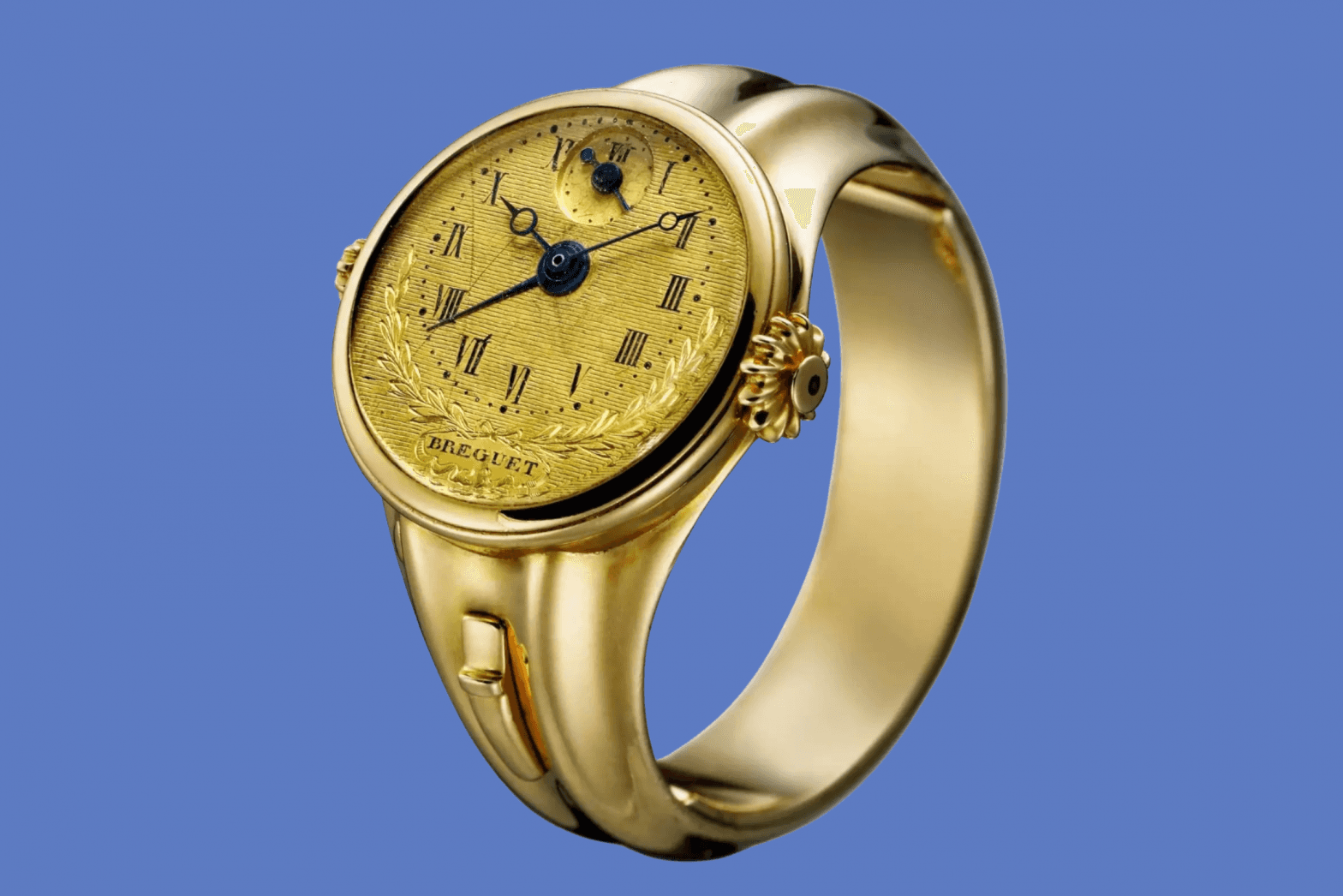
But as wristwatches came to dominate the timekeeping form of choice in the 20th century – thanks mainly to its popularity with soldiers fighting in wars – the demand for other horological objects seemed to wane. Admittedly, it’s much easier to tell time with a glance on the wrist than just about any other action, but is it more fun? Some of these objects might argue otherwise.
Even with the wristwatch’s increasing prominence in society, some fashion houses and watch manufacturers continued to dedicate time to non-wrist watches. From the 1920s through the 1950s, dozens of interesting objects can be found from makers of all types. This was a time of booming creativity in the watch industry – manufacturers like Patek Philippe and Vacheron Constantin created all kinds of weirdly-shaped watches, and other objects offered another avenue of creativity to explore.
Perhaps none did this better than Cartier. Flip through auction catalogs and archives and you’ll see all manner of Cartier objects integrated with a mechanical watch: table clocks, of course, but also pens, money clips, lighters, and letter openers. Pretty much any item that a 1930s lady or gentleman might reach for received the miniaturized watch treatment from Cartier.
.gif&w=4320&q=75)
One of my favorite horological objects from Cartier belonged to the Duchess of Windsor (Wallis Simpson), the American socialite whose romance with King Edward VIII’s ended in his abdication. After the Duchess’s death in 1987, her jewelry collection was famously auctioned off, still the largest private collection ever accumulated and sold. Among the collection was a Cartier compass and sundial that also included a watch. While examples of this multi-purpose “tool” have appeared at auction elsewhere, the provenance of this one – as well as the engraving, presumably from the former King himself, “'No excuse for going in the wrong direction Easter 1939” – make this example particularly special.

Cartier’s lighter watches are also emblematic of a bygone era. While vintage lighters are already considered collectible by a certain set, examples of lighters with added mechanical watches from the 1920s and 30s add additional intrigue to these functional objects.
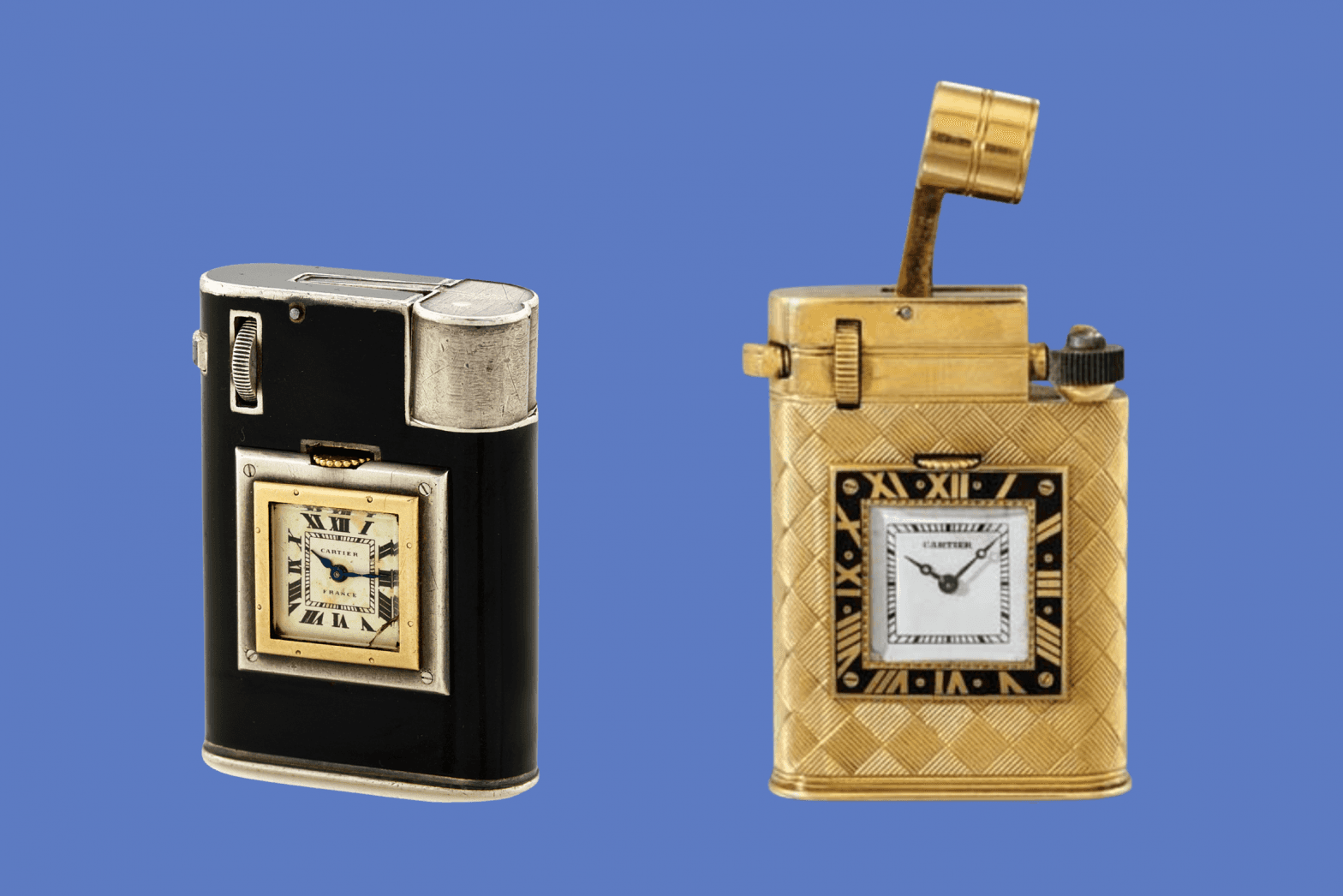
Unlike other horological objects, lighters are slightly larger, allowing houses like Cartier to show off their tendencies towards the ornate. While in many cases these lighters may not have been fully assembled by Cartier – as was common for the maison at the time – many of these lighters still feature beautiful engraving or enamel work finished by Cartier. Like many Cartier watches from the 1920s and 30s, these often feature movements signed by the European Watch & Clock Company.
Indeed, some of Cartier’s lighters may have been produced by Dunhill, and you’ll also find many vintage Dunhill lighters with mechanical watches built in the side.
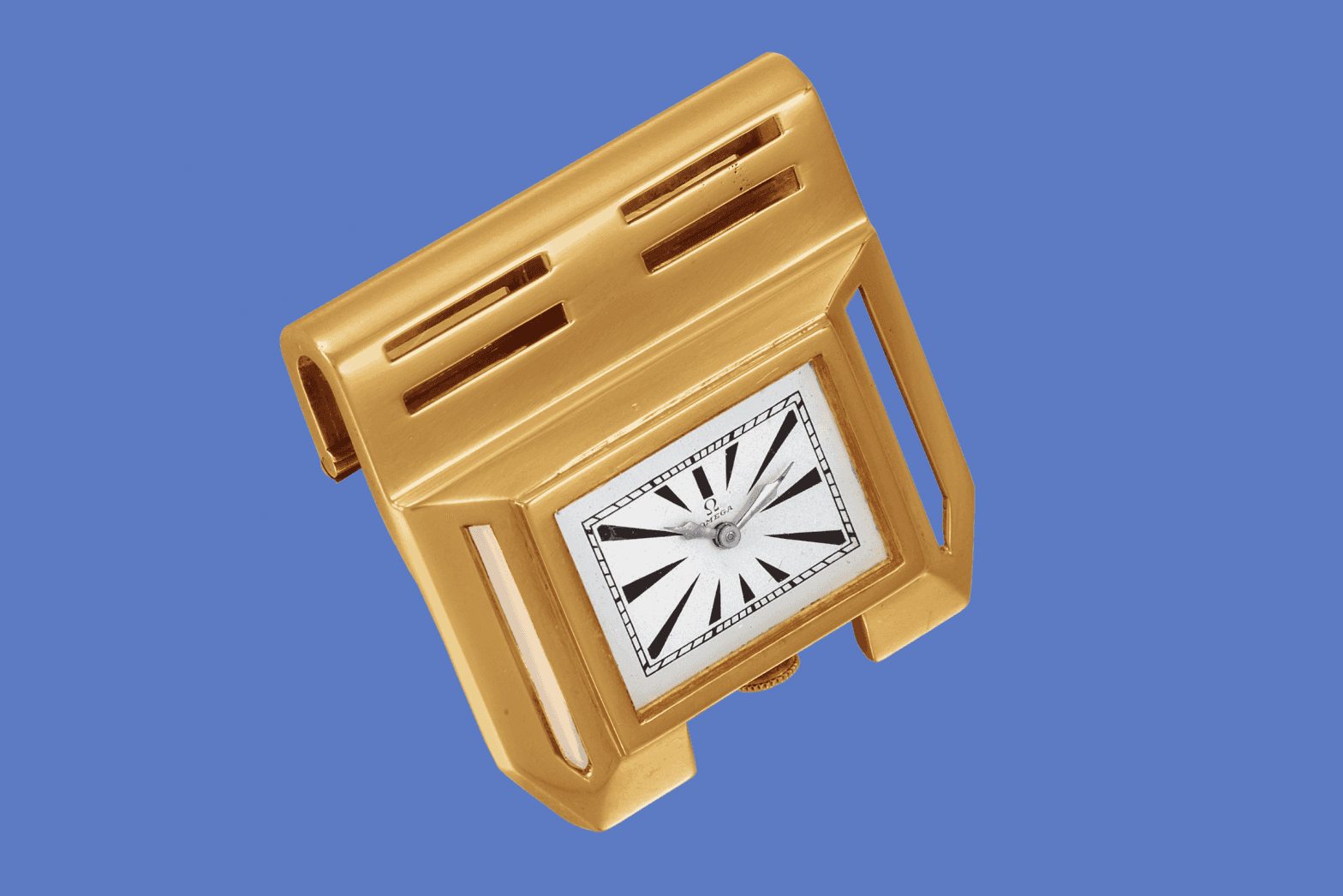
Finally, Cartier also produced various forms of money clips with tiny mechanical movements inside, as did Omega, Jaeger-LeCoultre, and others (many of Cartier’s vintage money clips use Jaeger movements).
“What I love about money clips and table clocks is that they’re just a different form of time telling that can be super original,” says well-known vintage collector Edmond Saran. “Money clip watches are great conversation pieces, fun, and also cost less [than comparable wristwatches]. A real lover of watches will be drawn to that.”
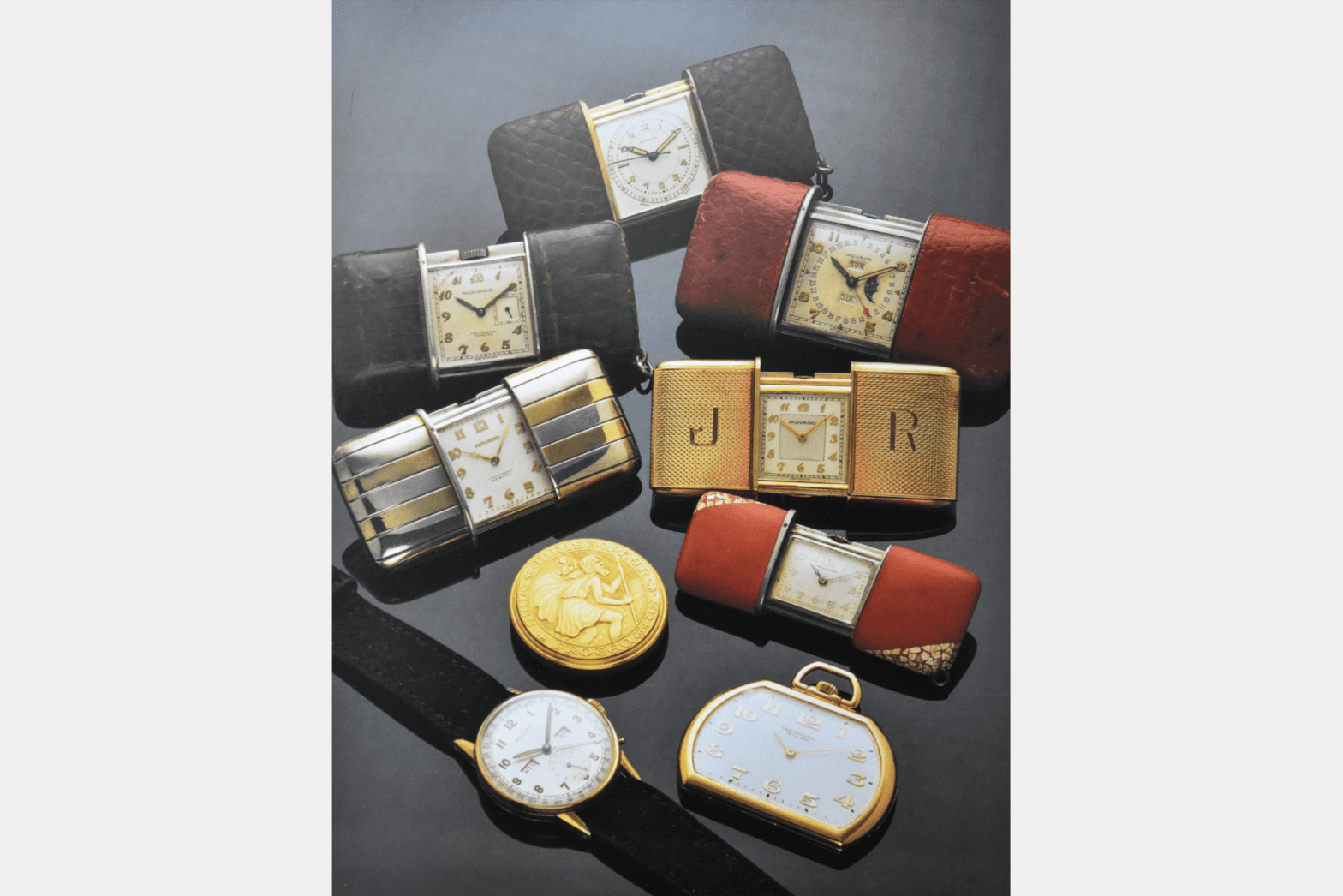
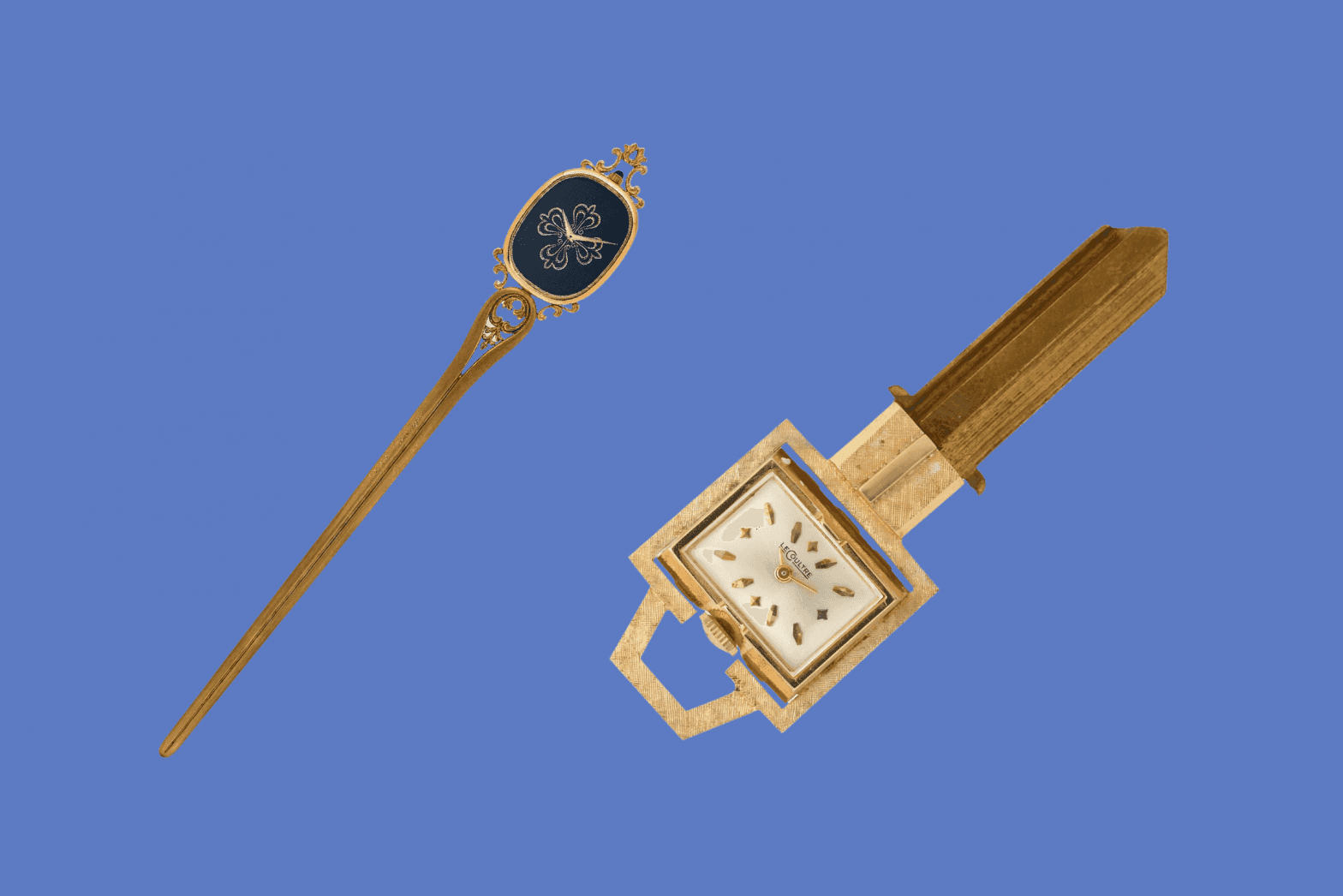
I could go on to talk about keys, locks, letter openers, belt buckles, purse watches, ermeto clocks, and more. The point is that, just the way the digital clock has found its way into everything from our oven to our car’s dashboard, artisans of a prior era also recognized the importance of telling time and put on display a certain creativity in placing mechanical watches in nearly any object they put their hands on.
Modern Kinetic Art
Today, modern watchmakers have taken this art form to a new level. This is perhaps no better illustrated than through the wacky creations of Max Busser & Friends (MB&F), often with the assistance of Swiss mechanical clockmakers L’Epee.
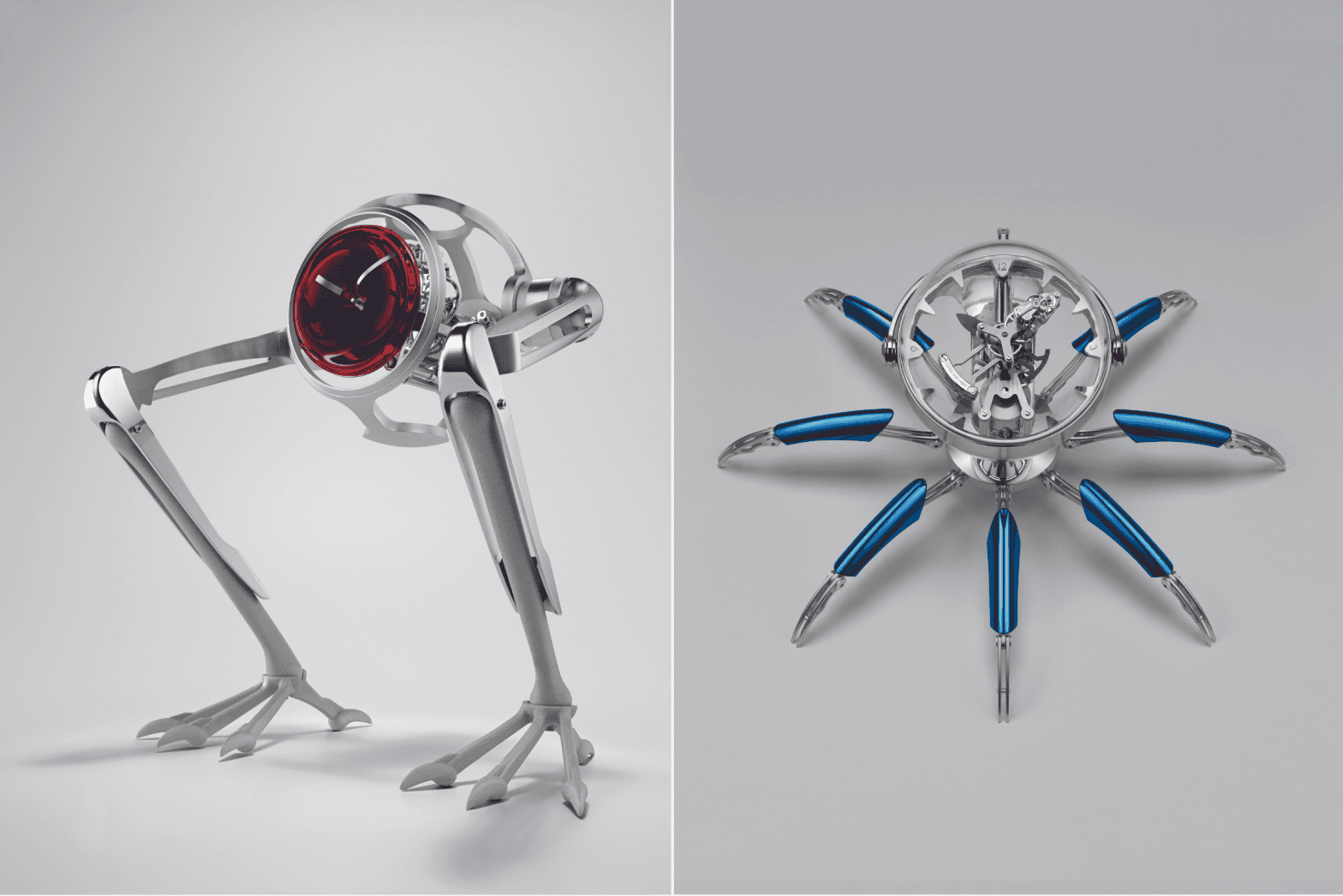
MB&F itself says its time art is “artwork that happens to tell the time.” While those vintage lighters, money clips, and keys from Cartier at least had an ostensible functional purpose, it’s not the same case with modern horological objects. It’s kinetic art, pure and simple. Creations like the MB&F x L’Epee T-Rex and Octopod take as muses physical beasts, taking their forms and adapting them to something capable of keeping time. The Octopod even takes inspiration from antique marine chronometers, providing this piece of unabashed modern art a grounding in horological history. Both illustrate MB&F’s ability to play with our expectations of how time should be told and turn the act of telling time into something worthy of an art gallery. While Mr. Busser certainly deserves credit as the mad scientist behind this kinetic art, emphasis certainly must be placed on his “Friends” too, in this case, L’Epee. The Swiss clockmaker traces its roots to 1839, but its ability to collaborate and modernize its aesthetic has ensured a new generation of collectors are intrigued by timekeepers that aren’t bound by the wrist.
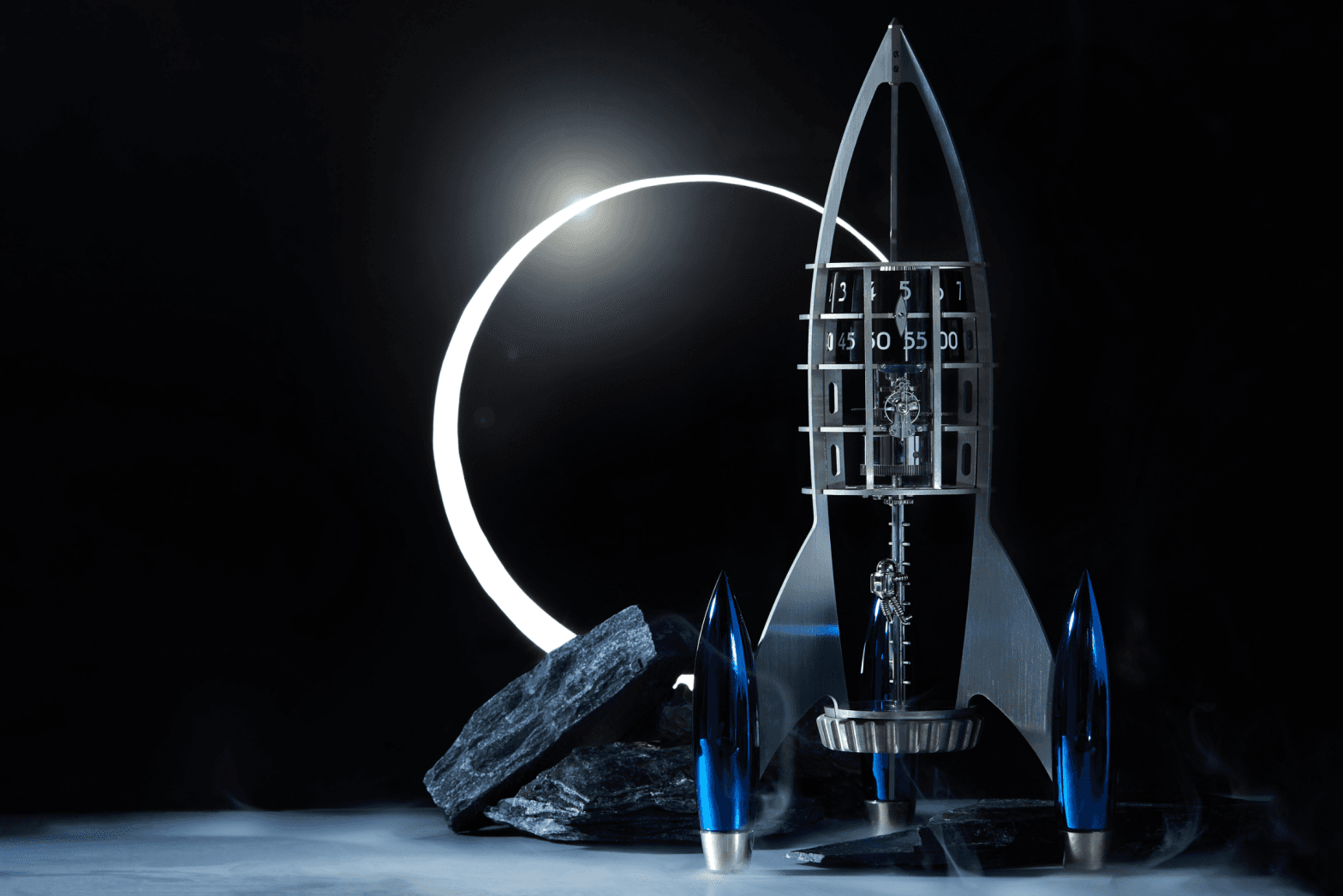
“For as long as I’ve been into watches, there is still a childlike joy in watching a mechanical object come alive,” watch collector and photographer James (better known as @waitlisted on Instagram) said. “I love the pieces I own from M.A.D. Gallery because they essentially distill this joy into its purest form – free of the need to serve a primary function, they become kinetic art for art’s sake, whirring and spinning and livening up a room in a way that a static image cannot.”
While James owns a couple of pieces of kinetic art from MB&F, others can enjoy the same by visiting the brand’s M.A.D. Gallery. Much the way vintage objects illustrate a certain creativity from artisans, these modern clocks allow watchmakers to explore their more artistic side, allowing them to express time in ways that might be too eccentric for a typical wristwatch.
Playing Around with Horological Objects
Now that we’ve covered the broad contours of horological objects, a personal indulgence, if you’ll indulge me.
A year or two ago, I spotted a few vintage golfer’s watches while doom-scrolling on Instagram – utilitarian watches from Seiko, beautifully ornate examples from Patek Philippe. These were basically pocket watches, but advertised for golfers to use while playing a round, recognizing that the impact of a golf swing might damage a wristwatch.
Besides watches, golf is a huge hobby of mine, a game I’ve played since I was four or five years old. I set out on a path to find one.
Eventually, I landed a simple Eternamic Golfer for less than a couple hundred bucks with a nice slate gray dial. Until I was able to acquire this watch, these two hobbies of mine – golf and watches – had existed separately. But I enjoy horological objects because they give collectors opportunities to blend their passions. Horological objects offer additional surface area for exploring watches and timekeeping.
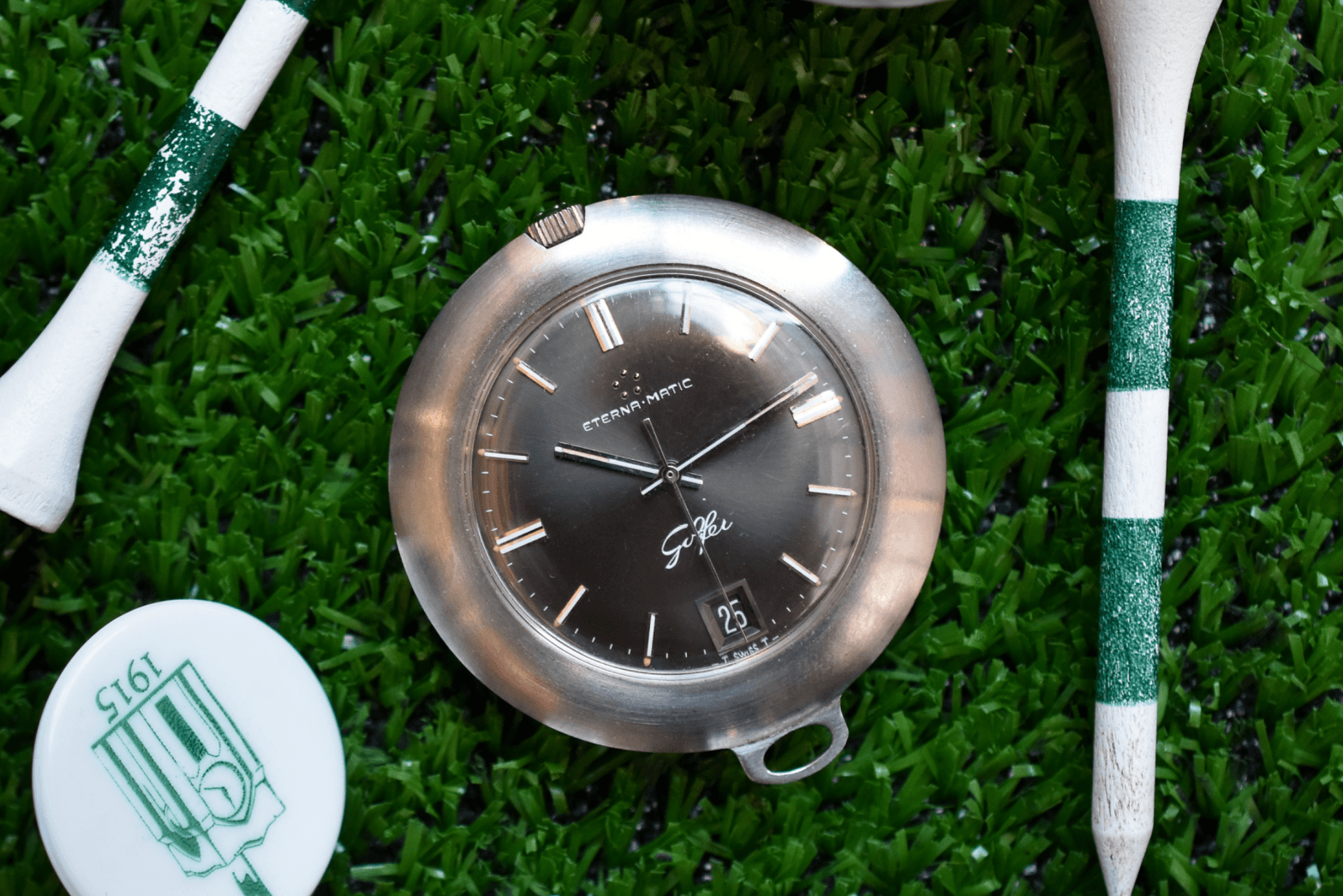
Besides that, as Saran mentioned, most horological objects seem to be undervalued for the watchmaking, design, and pure fun they represent. You probably won’t be interested in golfer's watches like I was, but if you search hard enough, there’s no doubt a horological object or three that speaks to you.
Off the Cuff
If you’re a collector, wristwatches are the start. But if you start to explore the world of horological objects, you might find some of the more whimsical creativity of artisans old and new. Vintage objects offer a peak at a bygone era of watchmaking and of life, when people carried around more than their phones. Meanwhile, modern kinetic art allows today’s watchmakers to express their artistic tendencies, pursuing art for its own sake. Both are worthy of collectors’ attention.
